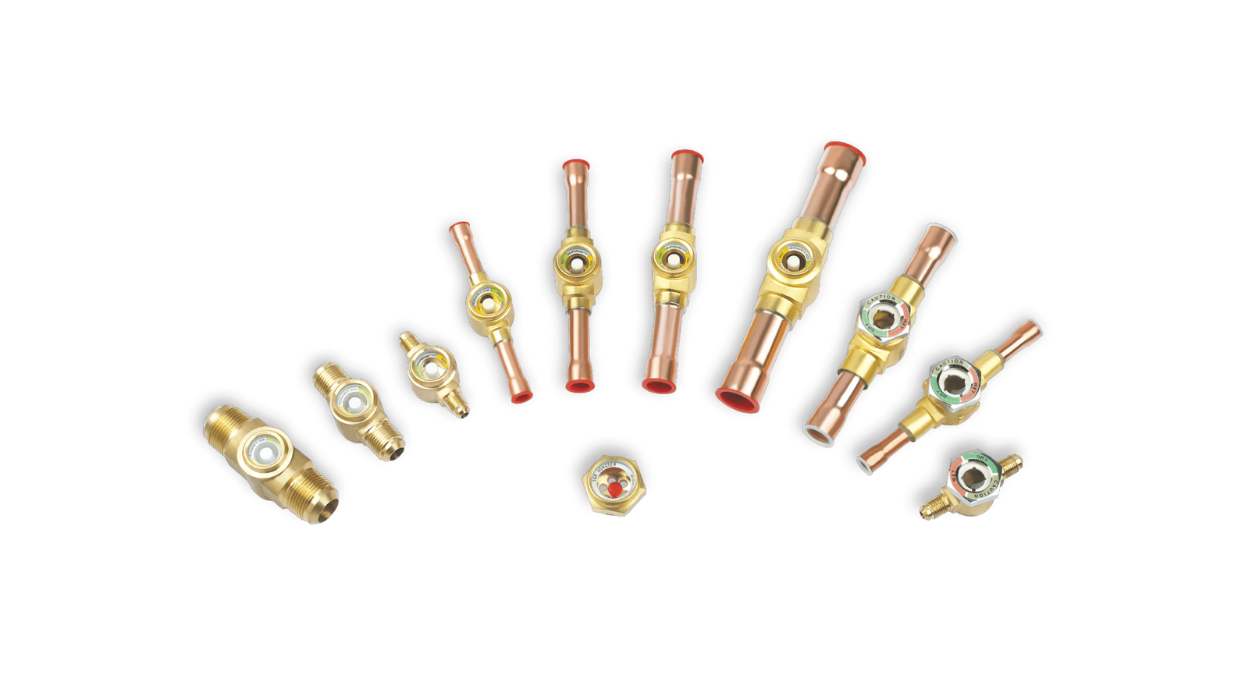

Articles
What Is A Sight Glass Used For In HVAC
Modified: August 27, 2024
Learn about the applications of sight glass in the HVAC industry and how it helps monitor fluid levels and flow. Read our informative articles for more insights.
(Many of the links in this article redirect to a specific reviewed product. Your purchase of these products through affiliate links helps to generate commission for Storables.com, at no extra cost. Learn more)
Introduction
When it comes to HVAC systems, there are numerous components that work together to ensure the efficient and effective operation of heating, ventilation, and air conditioning units. One such component that plays a crucial role in the functionality of HVAC systems is the sight glass.
In this article, we will explore the importance of sight glasses in HVAC systems, how they work, the various types available, their common applications, and the benefits of utilizing them. By understanding the significance of sight glasses and how they contribute to the overall performance of HVAC systems, you will be better equipped to make informed decisions and ensure optimal functioning of your heating and cooling equipment.
So, let’s dive in and enhance our knowledge about the important role of sight glasses in HVAC systems.
Key Takeaways:
- Sight glasses are essential visual tools in HVAC systems, providing real-time monitoring of fluid flow, levels, and conditions. They enable efficient troubleshooting, proactive maintenance, and enhance safety, contributing to the reliability and longevity of HVAC equipment.
- Proper maintenance and care of sight glasses are crucial for ensuring their continued functionality and effectiveness in HVAC systems. Regular inspections, cleaning, monitoring fluid condition, and professional maintenance help optimize system performance and extend the lifespan of HVAC equipment.
Read more: What Is Glass Used For
Understanding HVAC Systems
HVAC stands for Heating, Ventilation, and Air Conditioning, and refers to the systems that provide thermal comfort and acceptable indoor air quality in residential, commercial, and industrial buildings. These systems are designed to regulate temperature, humidity, and air movement to create a comfortable and healthy environment for occupants.
HVAC systems consist of various components working together to achieve their intended purpose. These components include air handlers, compressors, valves, ductwork, and sensors, among others. Each component performs a specific function to ensure the proper operation of the HVAC system.
The primary goal of an HVAC system is to maintain a comfortable temperature and humidity level in indoor spaces. During the summer, the system cools the air, removing heat and reducing humidity. In the winter, it heats the air, providing warmth and comfort. The ventilation component of the system ensures the circulation of fresh air, while filtration removes dust, allergens, and pollutants.
Efficient and reliable operation of an HVAC system is crucial for both personal comfort and energy efficiency. This is where sight glasses come into play.
Now that we have a basic understanding of HVAC systems, let’s move on to explore the purpose and functionality of sight glasses in such systems.
What is a Sight Glass?
A sight glass is a transparent window or tube that is integrated into HVAC systems to visually inspect the circulation of fluids, such as refrigerants or oils. It allows users to observe the fluid flow, level, and condition inside the system without the need for disassembly.
The sight glass is typically made of a durable material, such as glass or plastic, and is designed to withstand the pressure and temperature conditions within the HVAC system. It is usually installed at strategic points, such as in the refrigerant line, near the compressor, or within the oil circuit.
The main purpose of a sight glass is to provide visual feedback regarding the fluid’s characteristics and behavior within the HVAC system. It enables technicians to quickly assess the system’s performance, detect potential issues, and take necessary actions to prevent equipment damage or system failure.
In addition to allowing visual inspection, sight glasses may also incorporate indicators or dyes that change color when exposed to specific conditions. This provides further diagnostic information and helps identify abnormalities or contaminants in the fluid.
Sight glasses are commonly found in various industries, including HVAC, refrigeration, automotive, and manufacturing. However, in the context of HVAC systems, sight glasses play a crucial role in maintaining system efficiency, preventing damage, and ensuring optimal performance.
Now that we understand the basics of what a sight glass is, let’s explore why it is important in HVAC systems.
Importance of Sight Glass in HVAC
Sight glasses are an integral component of HVAC systems and serve several important purposes that contribute to the overall functionality and efficiency of these systems.
One of the primary advantages of sight glasses is their ability to provide visual confirmation of fluid flow and levels within the HVAC system. By observing the fluid movement, technicians can ensure that the system is operating as intended. Any irregularities or blockages can be quickly identified, allowing for prompt troubleshooting and resolution of issues before they escalate.
Furthermore, sight glasses enable the detection of leaks in the system. If there is a sudden drop in fluid level or the presence of unusual bubbles, it may indicate a leak that needs to be addressed. Timely detection and repair of leaks not only prevent further damage to the system but also help conserve resources and reduce environmental impact.
Another key benefit of sight glasses in HVAC systems is their role in monitoring the clarity and condition of the fluids. By assessing the color, consistency, and presence of contaminants in the fluid, technicians can determine if there is any degradation or contamination that could impact system performance. This allows for proactive maintenance and the replacement of fluids, ensuring optimal operation and extending the lifespan of the HVAC equipment.
In addition to fluid monitoring, sight glasses also provide insight into the operation of other components within the system. For example, in refrigeration systems, the sight glass can give valuable information about the state of the refrigerant and the effectiveness of the evaporation and condensation processes. This helps in maintaining proper refrigerant charge and preventing issues like overheating or inefficient cooling.
The real-time visibility provided by sight glasses also allows for efficient diagnostics and troubleshooting. By being able to physically observe the flow and behavior of fluids, technicians can accurately pinpoint the source of a problem and take appropriate corrective actions. This leads to faster repairs, minimized downtime, and improved overall system performance.
Overall, sight glasses play a critical role in maintaining the reliability, efficiency, and longevity of HVAC systems. They enhance safety, facilitate proper maintenance, and ensure the smooth operation of the entire system.
Now that we have explored the importance of sight glasses, let’s delve into how they work in HVAC systems.
How Does a Sight Glass Work?
Sight glasses utilize the principles of fluid dynamics and transparency to allow users to visually observe the flow, level, and condition of fluids within HVAC systems. They are designed to provide a clear view of the fluid without compromising the integrity or functionality of the system.
The working principle of a sight glass is relatively straightforward. It consists of a transparent window or tube that is fitted into the HVAC system, allowing a direct line of sight to the fluid pathway. The placement of the sight glass depends on the specific application and the type of fluid being monitored.
When a fluid flows through the system, it enters the sight glass, and its movement can be observed through the transparent material. Whether it’s a refrigerant, oil, or another fluid, the sight glass provides a visual confirmation of its circulation, ensuring that the fluid is moving as intended. This is crucial for smooth and efficient system operation.
The transparency of the sight glass allows technicians to not only monitor the fluid flow but also assess its level within the system. By observing the height of the fluid column, they can determine if the system is properly charged or if there are any abnormal fluctuations in fluid volume.
Sight glasses may also incorporate indicators or dyes that change color in the presence of specific conditions. For example, a dye may be used to detect the presence of moisture or contaminants in the fluid. This color change provides additional information that helps identify potential problems and take appropriate corrective measures.
In some cases, sight glasses may be equipped with accessories such as shutoff valves or pressure gauges. These additional components allow technicians to isolate the sight glass for maintenance or connect pressure monitoring devices directly to the fluid pathway. This helps streamline diagnostic processes and enables more accurate assessment of the system’s performance.
Overall, the functioning of a sight glass is relatively simple yet essential. It allows technicians to visually inspect the fluid flow, level, and condition within HVAC systems, enabling them to make informed decisions about maintenance, troubleshooting, and overall system operation.
Now that we have a clearer understanding of how sight glasses work, let’s delve into the different types of sight glasses used in HVAC systems.
A sight glass in HVAC systems is used to visually inspect the refrigerant flow and condition. It helps in diagnosing any potential issues with the system, such as low refrigerant levels or moisture contamination. Regularly check the sight glass for any abnormalities to ensure the system is running efficiently.
Read more: What Filter Should I Use For HVAC
Types of Sight Glasses Used in HVAC
There are several types of sight glasses used in HVAC systems, each tailored to specific needs and applications. The selection of the appropriate type depends on factors such as system design, fluid type, operating conditions, and desired functionality. Let’s explore some common types of sight glasses used in HVAC:
- Window Sight Glass: This is the most basic type of sight glass, consisting of a transparent window that allows technicians to observe the fluid flow and level. Window sight glasses are typically made of shatter-resistant glass or durable plastics and are widely used in a variety of HVAC applications.
- Tubular Sight Glass: Tubular sight glasses are cylindrical tubes made of glass or plastic. They provide a larger viewing area compared to window sight glasses and are commonly used in applications where a more extended range of fluid visibility is required. Tubular sight glasses can withstand higher pressures and temperatures.
- Flanged Sight Glass: Flanged sight glasses are designed with a flange on each end, allowing for easy installation and removal. They are commonly used in HVAC systems that require regular inspection and maintenance. Flanged sight glasses often have sealing gaskets to ensure a tight and secure fit.
- Double-Window Sight Glass: Double-window sight glasses consist of two parallel glass panes with a space in between. This design provides additional insulation and prevents condensation from forming on the outer surface of the sight glass. Double-window sight glasses are commonly used in refrigeration systems where low temperatures are involved.
- Indicating Sight Glass: Indicating sight glasses incorporate color-changing indicators or dyes that react to specific conditions. For example, a moisture-indicating sight glass changes color when exposed to moisture, alerting technicians to potential leaks or excessive condensation. These sight glasses provide additional diagnostic information and help in identifying and addressing issues promptly.
- High-Pressure Sight Glass: High-pressure sight glasses are designed to withstand extremely high pressure levels in HVAC systems. They are typically made of heavy-duty materials, such as borosilicate glass or stainless steel, and feature robust construction to ensure safety and durability in demanding applications.
Each type of sight glass offers unique advantages and is selected based on the specific requirements of the HVAC system. By choosing the appropriate type of sight glass, technicians can ensure accurate monitoring, efficient maintenance, and optimal performance of the HVAC system.
Now that we have explored the various types of sight glasses, let’s move on to discover the common applications of sight glasses in HVAC systems.
Common Applications of Sight Glasses in HVAC Systems
Sight glasses are utilized in various applications within HVAC systems to monitor fluid circulation, levels, and conditions. Let’s explore some common applications of sight glasses in HVAC:
- Refrigerant Lines: Sight glasses are commonly installed in refrigerant lines of HVAC systems, allowing technicians to monitor the flow and level of refrigerant. This helps ensure the proper charge and circulation of refrigerant, preventing issues such as inadequate cooling or compressor damage.
- Compressor Oil Circuits: Sight glasses are often integrated into the oil circuits of compressors to monitor oil levels and condition. By observing the oil flow and color, technicians can identify any contaminants or degradation that could impact compressor efficiency and lifespan.
- Chilled Water Systems: Sight glasses play a crucial role in chilled water systems, allowing technicians to visually inspect the flow of water and check for any air bubbles or leaks. This ensures efficient heat transfer and prevents potential issues with the system’s cooling capacity.
- Steam Systems: In steam-based HVAC systems, sight glasses are used to observe the presence and movement of steam. This helps technicians assess the proper functioning of steam traps, detect condensate backup, and ensure efficient heat distribution.
- Fluid Separators and Filters: Sight glasses are often installed in fluid separators and filters to monitor the efficiency and condition of these components. Technicians can assess the presence of contaminants or blockages and take appropriate action to maintain optimal performance.
- Heat Exchangers and Condensers: Sight glasses are utilized in heat exchangers and condensers to monitor fluid levels and identify any potential issues such as blockages or fouling. This ensures efficient heat transfer and prevents reduced system performance or failure.
- Expansion Valves: Sight glasses are sometimes installed on expansion valves to monitor the flow of refrigerant through the valve. This helps technicians ensure that the valve is functioning properly and maintaining the desired superheat levels in the system.
These are just a few examples of the common applications of sight glasses within HVAC systems. By providing real-time visual feedback, sight glasses enable technicians to monitor and maintain the optimal operation of various components, ensuring the system’s efficiency, safety, and longevity.
With an understanding of the applications of sight glasses, let’s explore the benefits of utilizing them in HVAC systems.
Benefits of Using Sight Glasses in HVAC
The utilization of sight glasses in HVAC systems offers a multitude of benefits that enhance system performance, maintenance efficiency, and overall operational effectiveness. Let’s delve into the advantages of using sight glasses:
- Visual Monitoring: Sight glasses provide real-time visual feedback, allowing technicians to observe fluid flow, levels, and conditions without the need for system disassembly. This visual monitoring enables early detection of issues, ensuring prompt maintenance and preventing potential system failures.
- Efficient Troubleshooting: Sight glasses simplify troubleshooting processes by providing a direct view of the system’s operation. Technicians can quickly identify abnormalities, blockages, or leaks, facilitating accurate diagnostics and more efficient repairs. This leads to minimized downtime and improved system reliability.
- Preventive Maintenance: By monitoring fluid condition and clarity, sight glasses enable proactive maintenance. Technicians can identify signs of fluid contamination or degradation and take preventative measures to ensure optimal system performance. This extends the lifespan of HVAC equipment and reduces the risk of costly repairs.
- Energy Efficiency: Sight glasses play a vital role in maintaining energy efficiency by allowing technicians to ensure proper fluid levels, monitor refrigerant charge, and identify any issues that may affect heat transfer or cooling capacity. This results in improved energy efficiency and reduced operating costs.
- Safety Enhancement: Sight glasses contribute to enhanced safety in HVAC systems by providing visual confirmation of refrigerant flow and levels. Technicians can detect any abnormal conditions or leaks, allowing for timely repairs and preventing potential hazards. This ensures the safety of both personnel and equipment.
- Real-Time Monitoring: Sight glasses enable continuous monitoring of fluid behavior, level changes, and system performance. This provides valuable insights into the HVAC system’s operation, allowing for proactive adjustments and maintenance to maintain optimal performance levels.
- Ease of Inspection: Sight glasses simplify routine inspections and maintenance tasks. Technicians can assess fluid levels and conditions without the need for additional tools or complicated procedures. This saves time and improves the efficiency of regular maintenance efforts.
These are just a few of the benefits of utilizing sight glasses in HVAC systems. By incorporating sight glasses into the system design, technicians can improve maintenance effectiveness, enhance system performance, and ensure the longevity of HVAC equipment.
Now that we have explored the benefits of using sight glasses, let’s discuss the maintenance and care required to keep these components in optimal condition.
Maintenance and Care of Sight Glasses in HVAC
To ensure the continued functionality and clarity of sight glasses in HVAC systems, it is important to follow proper maintenance and care practices. Here are some guidelines for the maintenance and care of sight glasses:
- Regular Inspection: Conduct regular visual inspections of the sight glasses to check for any signs of damage, such as cracks or cloudiness. Regular inspections help identify any issues early on and allow for timely repairs or replacements.
- Cleaning: Keep the sight glasses clean by regularly wiping them with a soft cloth or using a gentle cleaning solution. Avoid using abrasive materials or harsh chemicals to clean the sight glasses, as they can cause damage to the transparent surface. Proper cleaning ensures clear visibility and accurate monitoring.
- Fluid Condition: Monitor the condition of the fluid observed through the sight glass. If there are signs of contamination, degradation, or discoloration, take appropriate action, such as replacing the fluid or cleaning the system components, to maintain optimal performance.
- Sealing Integrity: Ensure that the sight glass is properly sealed and free from any leaks. Check the gaskets or sealing materials regularly and replace them if they show signs of wear or deterioration. A proper seal prevents fluid leaks and maintains the integrity of the system.
- Protection from Physical Damage: Take measures to protect sight glasses from physical damage, such as impacts or excessive vibrations. Consider installing protective guards or barriers around the sight glasses to minimize the risk of accidental damage during maintenance or system operation.
- Temperature and Pressure Considerations: Ensure that the sight glasses are suitable for the temperature and pressure range of the HVAC system. Check the manufacturer’s specifications to verify that the sight glasses can withstand the conditions they will be exposed to. Using sight glasses that are not rated for the appropriate temperature or pressure can lead to failure or inaccurate readings.
- Professional Inspection and Maintenance: While regular visual inspections can help identify visible issues, it is essential to schedule periodic professional inspections of the entire HVAC system, including the sight glasses. HVAC technicians can conduct thorough inspections, perform necessary maintenance, and address any underlying issues that may affect the sight glass performance.
By adhering to these maintenance and care practices, you can ensure that sight glasses in HVAC systems remain in optimal condition. This will enable accurate monitoring, early detection of problems, and reliable performance of the HVAC system as a whole.
Now that we have covered maintenance and care, let’s summarize the key points we have discussed in this article.
Read more: What Kind Of Sights For Home Defense Pistol
Conclusion
In conclusion, sight glasses are vital components in HVAC systems that provide visual confirmation of fluid flow, levels, and condition. They play a crucial role in maintaining system efficiency, preventing damage, and ensuring optimal performance.
By allowing technicians to visually monitor the HVAC system, sight glasses facilitate efficient troubleshooting, proactive maintenance, and accurate diagnostics. They enable early detection of issues, leading to timely repairs and minimizing system downtime. Additionally, sight glasses enhance safety by detecting leaks and abnormalities, ensuring personnel and equipment protection.
There are various types of sight glasses used in HVAC systems, including window sight glasses, tubular sight glasses, flanged sight glasses, double-window sight glasses, indicating sight glasses, and high-pressure sight glasses. Each type offers unique advantages and is selected based on specific system requirements and fluid characteristics.
Common applications of sight glasses in HVAC include refrigerant lines, compressor oil circuits, chilled water systems, steam systems, fluid separators and filters, heat exchangers and condensers, and expansion valves. Sight glasses provide real-time feedback on fluid behavior and enable technicians to maintain optimal system performance in these applications.
The benefits of utilizing sight glasses in HVAC systems are numerous. They include visual monitoring, efficient troubleshooting, preventive maintenance, enhanced energy efficiency, safety enhancement, real-time monitoring, and ease of inspection. Sight glasses contribute to the reliability, longevity, and energy efficiency of HVAC systems.
To ensure the continued functionality of sight glasses, regular inspections, proper cleaning, monitoring fluid condition, maintaining sealing integrity, protecting against physical damage, and professional inspections are vital. Following these maintenance and care practices will help ensure the clarity and effectiveness of sight glasses within HVAC systems.
In conclusion, sight glasses are essential tools that provide valuable visual information in HVAC systems. By incorporating sight glasses and following proper maintenance practices, technicians can optimize system performance, enhance safety, increase energy efficiency, and prolong the lifespan of HVAC equipment.
Now armed with a solid understanding of sight glasses and their importance in HVAC systems, you can confidently make informed decisions to improve the functionality and efficiency of your heating, ventilation, and air conditioning units.
Frequently Asked Questions about What Is A Sight Glass Used For In HVAC
Was this page helpful?
At Storables.com, we guarantee accurate and reliable information. Our content, validated by Expert Board Contributors, is crafted following stringent Editorial Policies. We're committed to providing you with well-researched, expert-backed insights for all your informational needs.
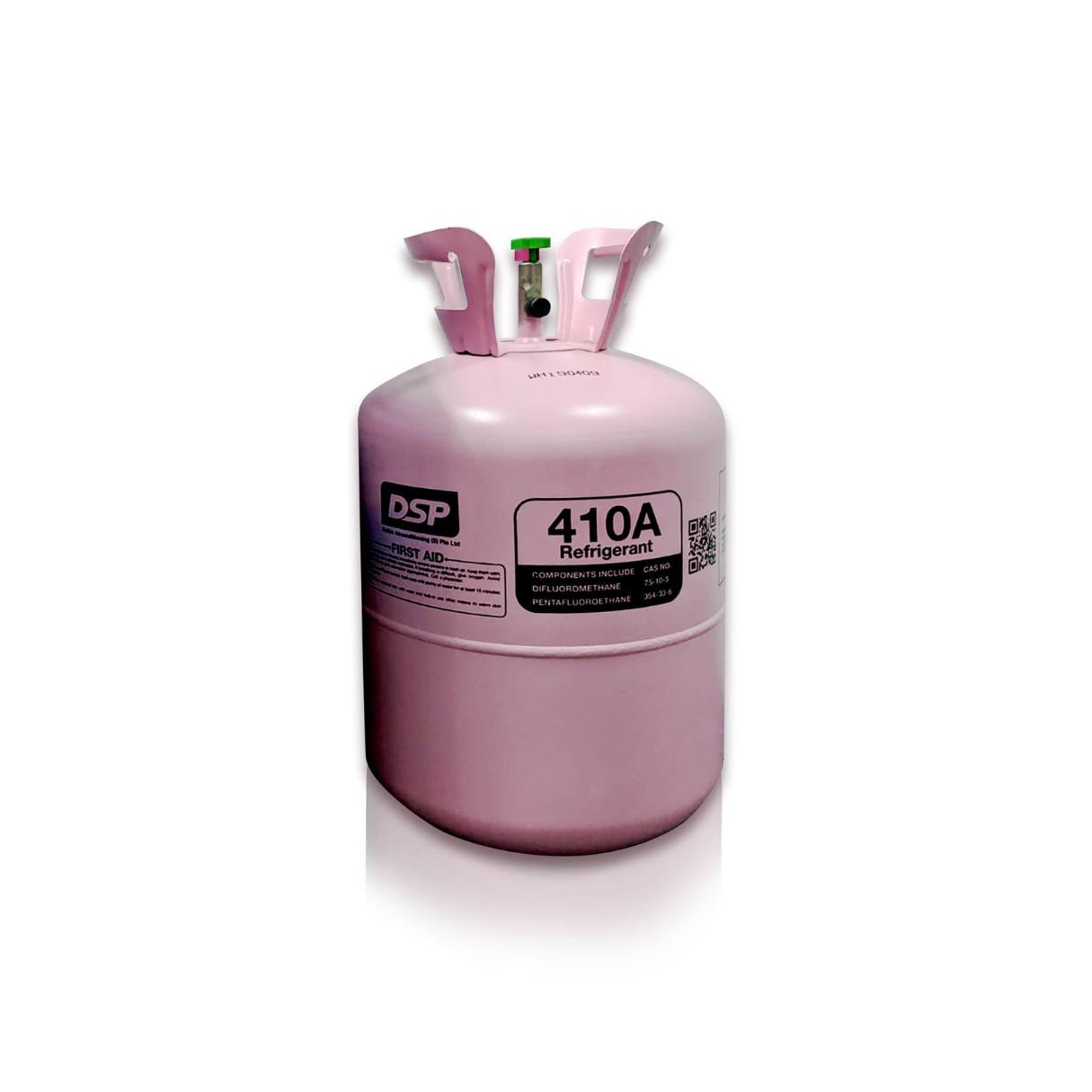
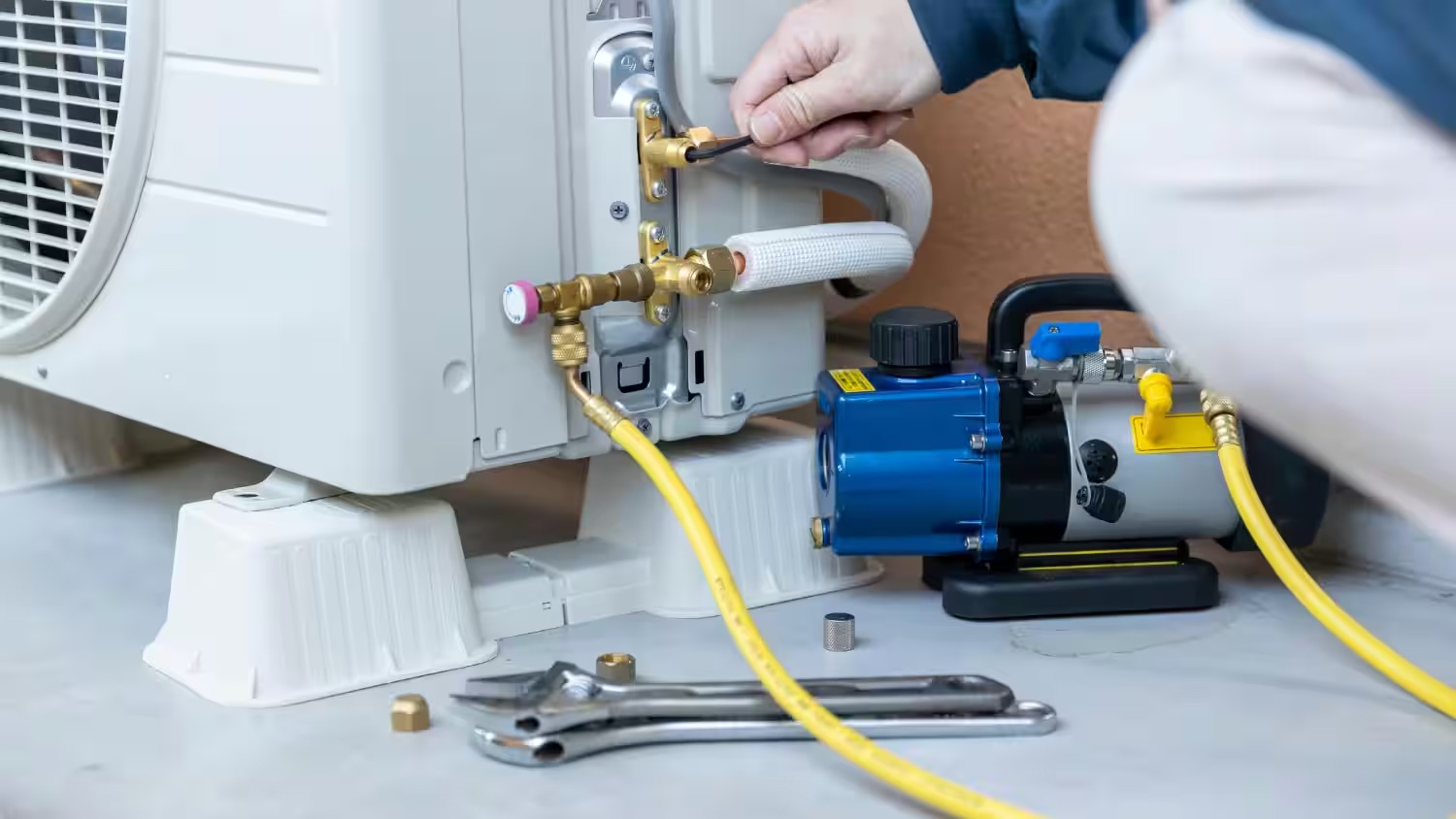



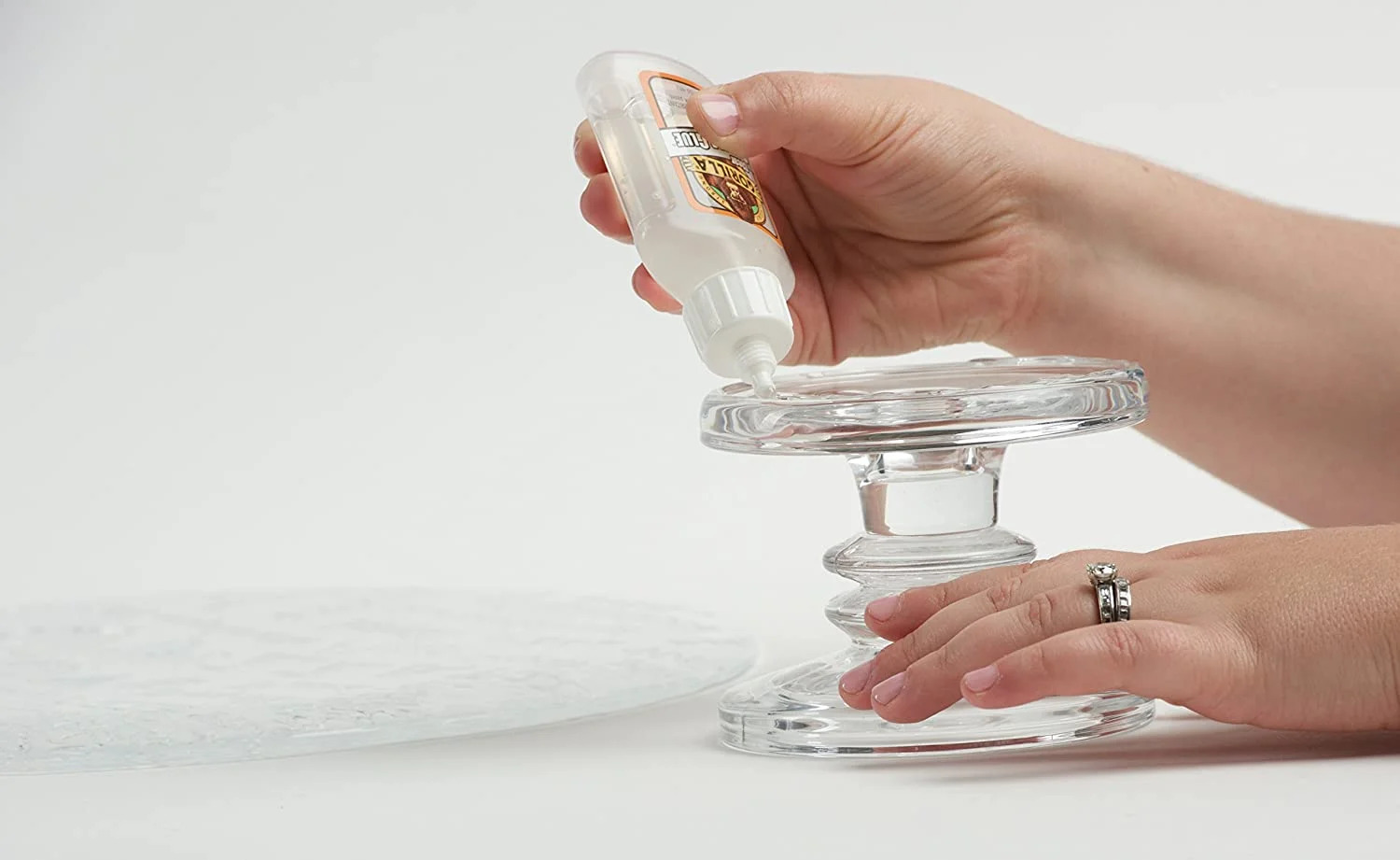
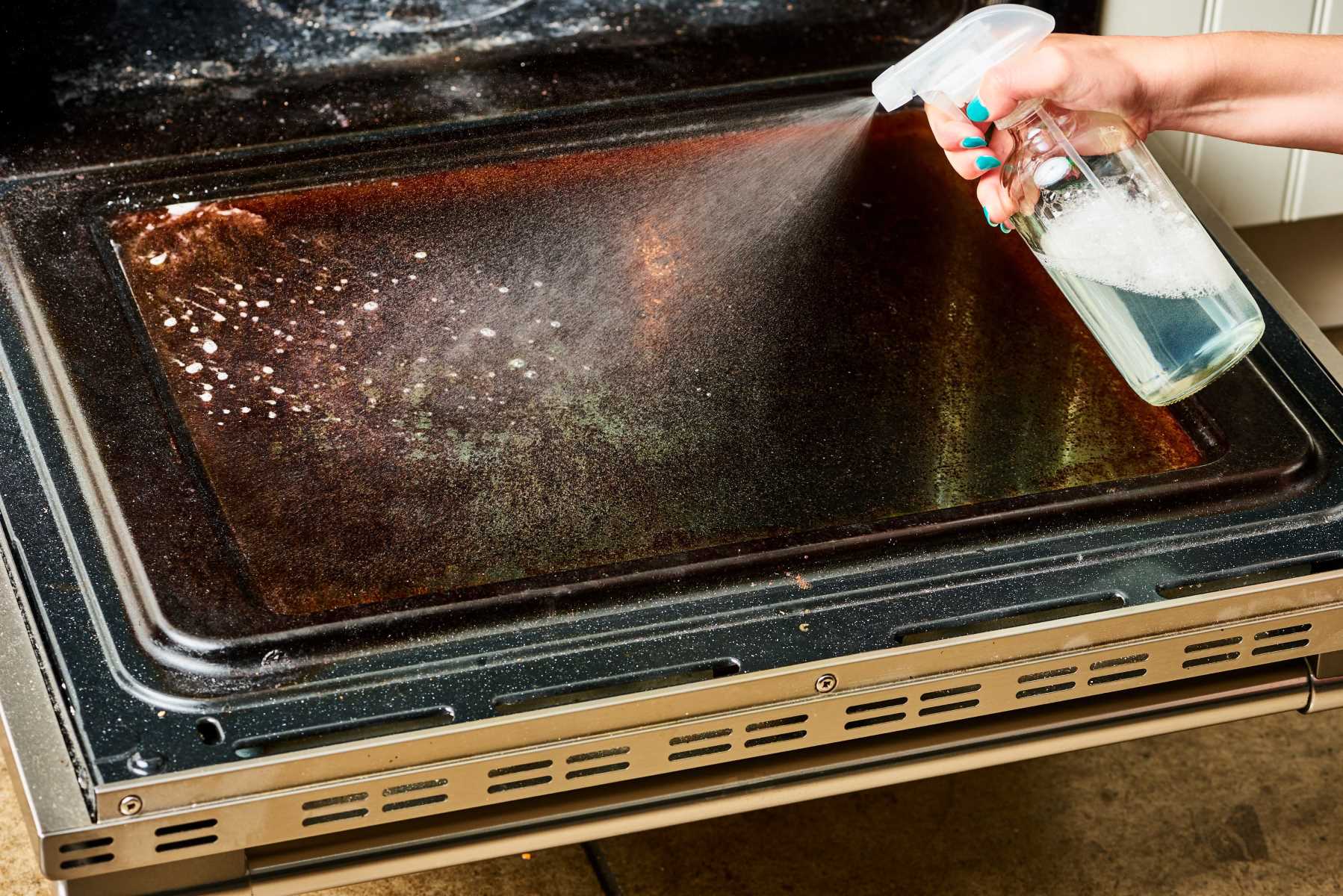


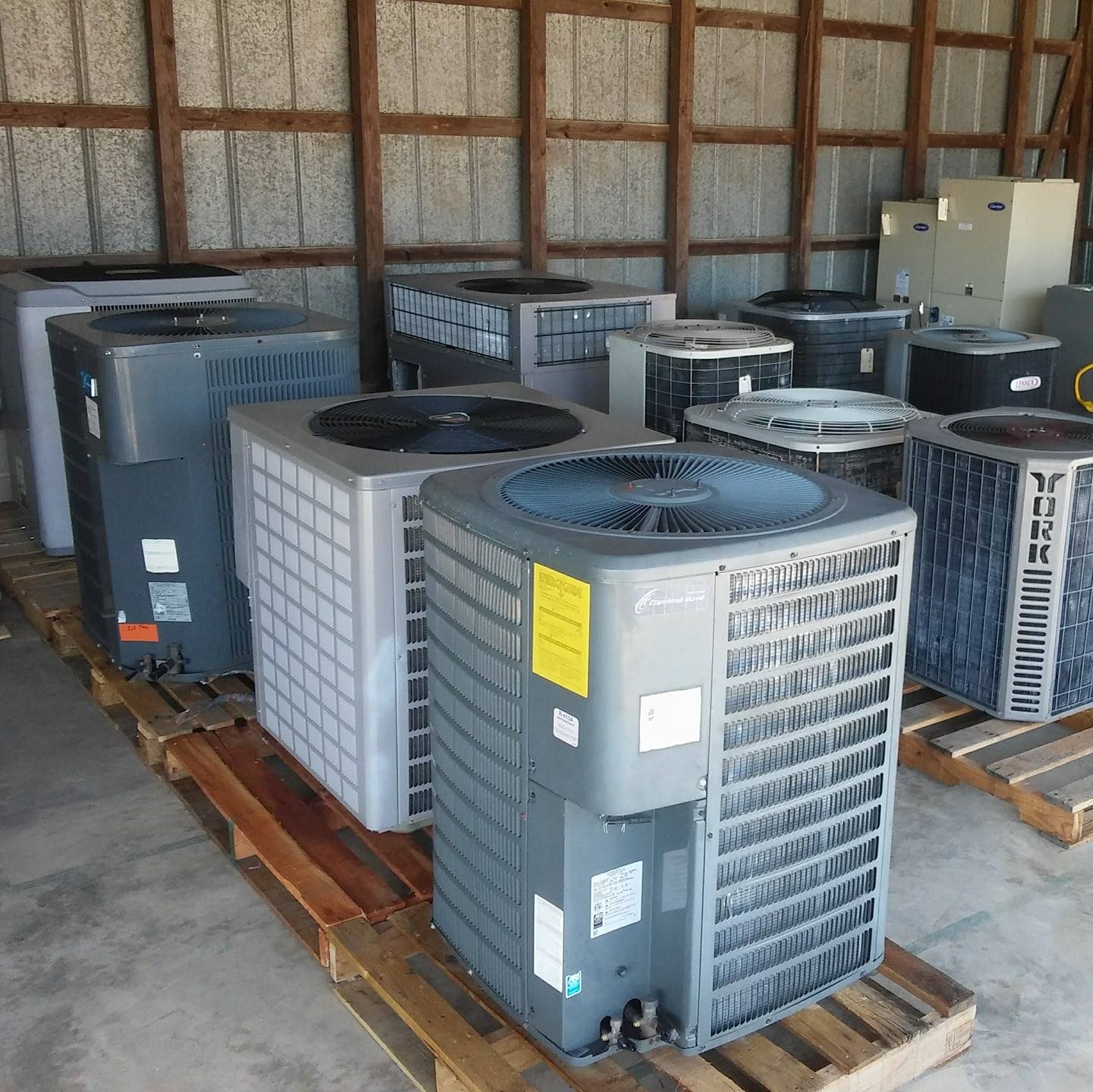
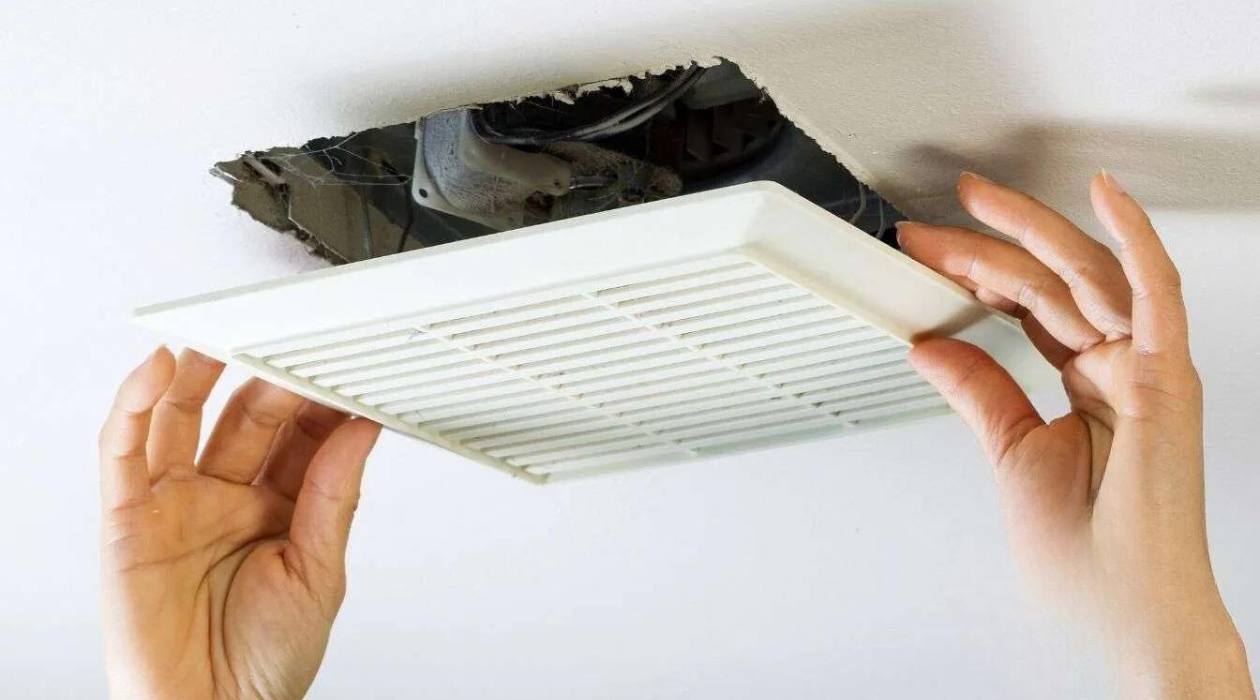



0 thoughts on “What Is A Sight Glass Used For In HVAC”